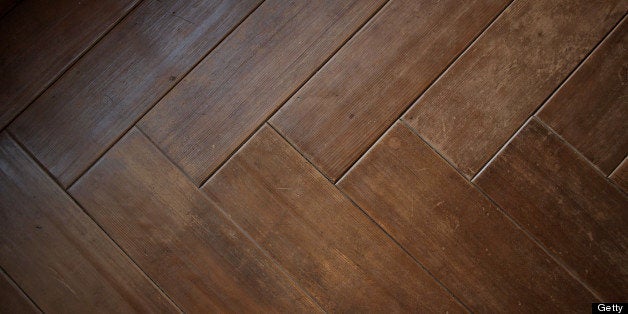
In the first of three posts with Russ Kendzior of the National Floor Safety Institute, we learned some general tips for fall prevention, including the importance of good lighting, clear steps and strategically mounted grab bars. In this continuation of our interview, he gives you the nitty-gritty about taking care of your floors to avoid the trips and slips that you can do without. We'll start with ways to make all kinds of flooring safer. Hint: You won't have to mop it as often!
What can older people do to make their current flooring less slippery?
One thing that often gets overlooked is how you clean your floor. Conventional detergent- or soap-based floor cleaners leave a slippery film. You can purchase what's called a "high traction floor cleaner" or simply avoid cleaners with a lot of added soaps and fragrances. People expect their floor cleaners to offer the "benefits" of a shiny wet look and a good smell, but the gloss is slippery and the fragrance is carried by oil. Basically, you get an oil slick on your floor -- and it builds up with every cleaning.
For ceramic flooring, the cleaner is a mix of water and a little vinegar. And you don't have to clean floors as often as you think, either. Most home floors aren't filthy and only require frequent sweeping and an occasional wet cleaning. Most spills can be spot-cleaned.
For cleaning wood floors, remember that most wood plank flooring products are now factory made and have a prefinished PVC wear layer. Another popular "wood" choice is laminate flooring, which is really 100 percent synthetic, akin to an old-fashioned Formica ® counter tops. Because the wear layers of these materials are synthetic, they need to be cleaned with a product designed to clean synthetic floors and not wood.
Although people really love to use oil soap to clean their wood laminate floors, these products are designed for use on solid wood floors without a wear layer. When used on synthetic floors, they leave a dangerous film of oil. In fact, the NFSI did a side-by-side study on the effects of household floor cleaners as they relate to slip resistance and found that oil soap actually reduces the slip resistance by more than 50 percent, thus dramatically increasing the risk of an accidental slip-and-fall.
If you have real wood floors with a high-gloss finish [which also adds glare, hard on older eyes - RA], consider stripping and re-coating them with a matte or satin finish. [It's also a chance to change the color for easy-viewing contrast with your furniture, and to update your home. - RA]
It's also easier to see a wet hazard on a dull floor.
How about carpeting?
Low-pile, wall-to-wall carpeting offers a higher level of slip resistance than solid flooring, but aged, stretched or torn carpet can be hazardous. So, keep an eye on the condition of your carpet. If it's generally in good shape, you can get it tightened by a professional installer. It really has to be well-secured and flat. And get it properly cleaned to remove slippery residue -- but watch out for carpet shampoo. It can go from the carpet to hard surfaces, so you'd do better with steam cleaning or a "zero res" cleaning that doesn't use chemicals.
I should mention that in older house, the floors are pitched and the thresholds are elevated -- get some help to level the floors and minimize all the flooring transitions to make them seamless with the regular flooring in each room. [One fun test for bumps and lumps: Pull a wheeled toy on a string from room to room. Or, if you can't glide like a ghost or simply roll a ball over thresholds without interruption, fix the transition. - RA]
Saving the best for last, what about rugs, the frequent target of my wrath?
Throw or scatter rugs raise the risks of two types of falls, from tripping and from slipping (in the scientific jargon of my field, we call them a "trip and fall" and a "slip and fall"). Tripping and falling on the edge of a rug or mat is the most common type of fall injury. Even those "anti-fatigue" mats for standing by the kitchen sink are a problem, because once water gets under the mat, it's like riding a surfboard. And you want to see if the top of the mat offers any slip resistance as well.
Like most people working in the field of safety, I don't want to argue with people but rather inform them -- to persuade them about the trade-offs they make about appearance versus safety. So, for example with popular throw rugs, there comes a point at which the trade-off is not worth the benefit. I think people are just used to these rugs, but they need to know that we walk differently as we age.
It may surprise people to know that, when walking, people raise their feet on average only an eighth to a quarter of an inch above the surface. As we age, we tend to shuffle our feet rather than raise them, therefore older adults are more prone to trip and fall on rugs, mats or any slight change in elevation.
Check back in about a week, when we'll conclude this 3-part series with safety expert Russ Kendzior. I hope you'll circulate these columns to help us reduce the incidence of falls in your community. In the final post on flooring and falls, we'll talk about choosing flooring for outdoor applications, such as patios and walkways, as well as ways to take consumer action on safer flooring.
Plus, a bonus: How to make sure you don't trip over a snoozing Fluffy or Fido!